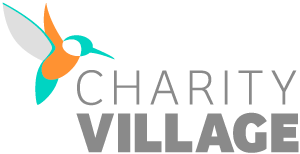This article is the second in a two-part series on government grant writing. Read the first article here.
Congratulations! You have determined that your organization is eligible to apply for a funding opportunity and that applying is a good strategic decision. Now the fun begins!
Proposals for government funders vary widely in complexity, length, and planning and design requirements. Each opportunity is unique and will require a different level of effort and operate on a different timeline. While it is impossible for me to give you detailed instructions on how to write your proposal, what I can offer is a set of generic steps that you can further adapt for your own specific needs.
Step 1: Do your homework!
- Read through the call for proposals or government website in detail. Does the RFP link to any other background documents, policy frameworks etc.? If so go through these documents as well.
- Do you have everything you need to demonstrate that your organization is eligible for funding? If you don’t have access to all the documents (board charter, financial statements etc.), make a plan for how to get them.
Step 2: Analyze your organization’s qualifications:
- What kind of organization and program is the funder wanting to fund? What kind of skills, experience do they want the organization to have?
- List all the characteristics they identify.
- List all the qualifications and specific examples your organization has that match this list.
- Take your list from bullet 3 and arrange it according to how the RFP is structured. This will become a basic outline for your proposal.
Step 3: Create a work plan
- Identify the submission deadline and confirm how you will submit your proposal. Will you email it? Will you upload it through a portal? Don’t forget to confirm the time zone if the proposal is due at a particular time.
- Create a work-back schedule and a roles and responsibilities chart. A work-back schedule can take various forms. You may wish to use a Gantt chart to plan out your timelines, or you may wish to use a simple table.
Step 4: Design your program (if you are submitting a new initiative)
- Plan your activities. Decide what activities you are going to deliver, who will be responsible for them, and when will they be delivered during the project. When will community members need to be involved? What about partners?
- Identify required resources and inputs for each step. These typically include staff time, expertise, physical resources, logistics, etc.
- Prepare a budget. What will it cost to deliver the program? What staff and office costs should be included? Does the total budget match the available funding?
Step 5: Review, review, review
Make sure you have included EVERYTHING requested and that there are no typos! And be sure you stay within required word and character limits. ask a colleague to read it over one last time before submitting.
You’ve submitted your application – now what?
Congratulations – you followed all the necessary steps! You have met all the requirements and submitted your proposal on time and through the correct channels.
Mostly what is left to do is wait. But while you are waiting, you can reflect on your experience. You should never stop engaging with government partners and learning more about their priorities, as well as promoting your organization.
Some final steps at this stage include:
- Reflecting on what worked and didn’t work with the process. What would you do differently? What systems or processes do you need to set up to make the next submission easier?
- Are there other similar opportunities you can apply for, using some of the planning and reflection you have already done?
- Reaching out to your organization’s political contacts or champions, to let them know you submitted a proposal and would like their support.
- Reach out to others who have submitted to compare notes and share information.
I hope these two articles have been helpful for you as you consider applying for government funding. I wish you all the best on your next grant proposal!
Jesse Clarke is the founder of JN Clarke Consulting, which helps charities and nonprofits find success with government funding. Jesse has a proven track record over her 20-year career working with municipal, provincial, and federal governments, as well as international organizations, to affect policy changes and win funding for her charitable and nonprofit clients.







